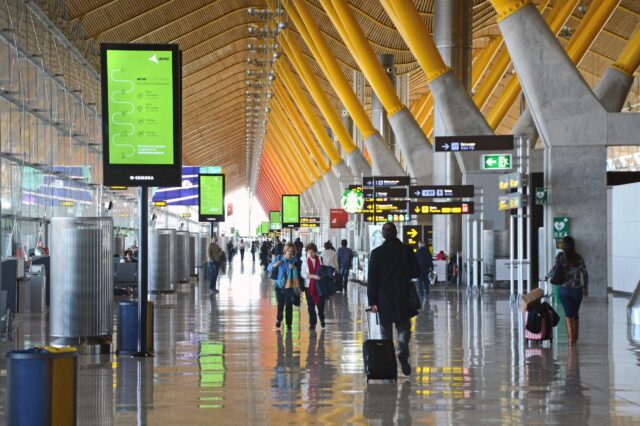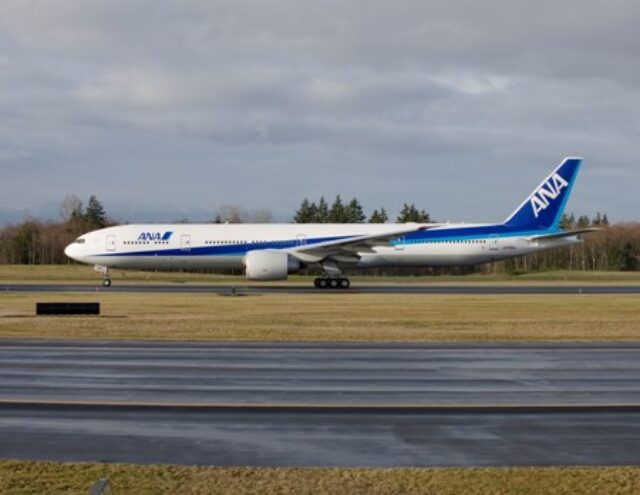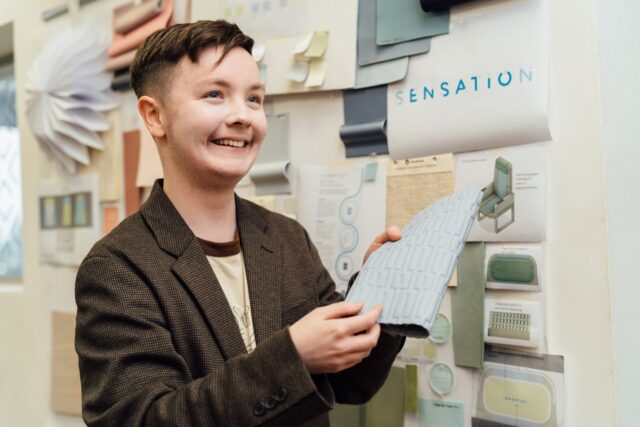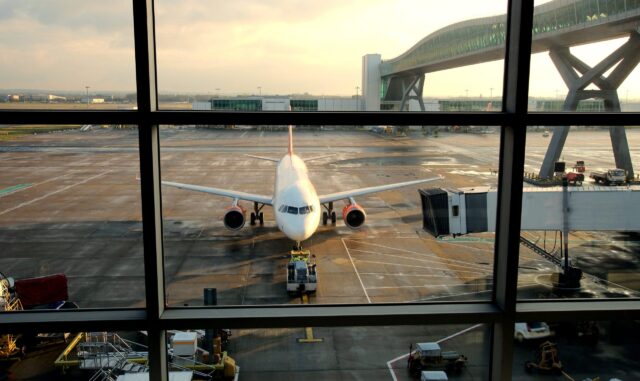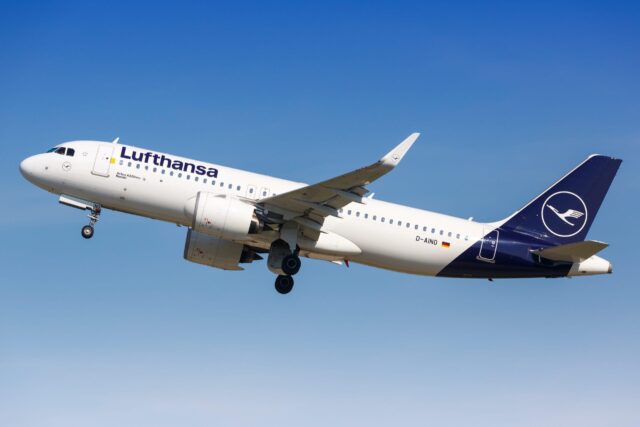StormShroud EW UAV now in service
May 4, 2025

Unmanned systems have revolutionised modern warfighting, both offensively and defensively, as a number of recent conflicts have shown. The RAF has now introduced a new unmanned aircraft, the StormShroud, into operational service. This was announced on 2 May 2025 by Prime Minister Sir Keir Starmer during a visit to Leonardo UK’s Luton site.

The new UAV was described as being the first of a new family of Autonomous Collaborative Platforms (ACPs) which, it was said, will revolutionise the RAF’s advantage in the most contested battlespaces.
The RAF’s exploration of ACPs is part of its broader strategy to embrace technological advancements and to maintain its position as a world-leading air force. It is hoped that a blend of manned and unmanned autonomous platforms operating together will reduce the risks faced by manned aircraft when operating in contested environments, and will be a more agile, adaptable and cost-effective model that will optimise UK capabilities against increasingly sophisticated adversaries. In a world of increasing threat to the UK and our NATO allies, StormShroud will serve as a powerful deterrent to potential aggressors.

The service introduction of StormShroud marks a significant step for the RAF (and the Ministry of Defence) in the journey of putting integrated autonomous systems into front line operations. It will also provide high-end electronic warfare capabilities that do not need crews to fly the systems, freeing personnel up for other vital frontline missions.
StormShroud is said to be one of the first RAF high-risk capabilities; in which cutting edge technology is being brought into service with a balanced and risk-aware approach to assurance, avoiding excessive time and cost penalties.
The decision to launch StormShroud follows lessons learned from the war in Ukraine (where Tekever’s basic AR3 and related AR5 have seen extensive service, racking up more than 10,000 flying hours with Ukraine’s armed forces). Portuguese-owned Tekever is currently producing hundreds of AR3s a year with potential to further scale up production. It therefore provided an obvious platform basis for StormShroud, while the Leonardo BriteStorm was an equally obvious basis for the EW payload.
In retrospect, it can be seen that it was perhaps no mere coincidence that a Tekever AR3 was featured on the cover of the RAF’s Autonomous Collaborative Platforms strategy, when it was published on 27 March 2024.

BriteStorm is a low Size, Weight & Power (SWAP) Stand-in Jammer payload designed to be carried on-board small unmanned aircraft or missiles and using high-powered digital jamming and deception techniques to suppress and deceive an enemy’s Integrated Air Defence System (IADS). The BriteStorm payload comprises a Miniature Techniques Generator (MTG) along with a series of Transmit Receive Modules (TRMs) which can be tailored to the operator’s platform of choice, and developed by Leonardo to be effective against a wide spectrum of threats. BriteStorm is small, lightweight, and with low power requirements. This makes it platform agnostic and suitable to be integrated into a wide range of unmanned aircraft. BriteStorm was designed to be attritable, but also to be rapidly reprogrammable for subsequent missions if recovered.
StormShroud has been developed in the UK by the RAF’s Rapid Capabilities Office, the Defence Equipment & Support (DE&S) ACP delivery team (formerly known as the Catalyst team), Defence Science and Technology Laboratories (DSTL), and UK industry. An initial investment of £19 million saw the first batch of UAVs being manufactured in the UK, supporting 200 jobs including some at Tekever’s site in Aberporth, West Wales, and at Leonardo’s Luton site in Bedfordshire. The UK Government has said that this shows that “Brand new tech supports hundreds of jobs and shows investment in UK defence is driving economic growth, making communities better off, and bolstering national security by delivering on the Plan for Change.”
Prime Minister Keir Starmer said that: “Investment in our defence is an investment in this country’s future. Putting money behind our Armed Forces and defence industry is safeguarding our economic and national security by putting money back in the pockets of hard-working British people and protecting them for generations to come.”
Tekever plans to invest a further £400 million over the next five years across the UK, creating up to 1,000 more highly skilled jobs, in what has been described as a further vote of confidence in the UK defence industry.
Ricardo Mendes, the CEO of Tekever, said: “This programme is a strong example of how the Ministry of Defence and Industry can work collaboratively to deliver cutting edge defence capability at pace while incorporating lessons learned from operational feedback in Ukraine and supporting the UK sovereign industrial base. This strategic commitment to the UK is more than an industrial expansion – it is a plan to position the UK to lead the transformation of Europe’s defence landscape by delivering faster, more adaptive capabilities that stay ahead of evolving threats.”
The StormShroud is based on the Tekever AR3 platform, manufactured in west Wales and Southampton, carrying Leonardo UK’s BriteStorm electronic warfare payload, which is manufactured in Luton. BriteStorm provides a powerful radar jamming capability that disrupts enemy Integrated Air Defence Systems at long range, improving the survival rate and operational effectiveness of the UK’s manned F-35B Lightning and Typhoon aircraft, by enabling them to attack their targets while remaining undetected.
It has taken just one year from the Urgent Capability Requirement (UCR) being endorsed to delivering the new capability, significantly reducing programme time and costs. A DE&S release stated that the unmanned air systems were procured and delivered by DE&S in less than six months. This will allow the RAF to defend against adversaries with greater numbers whilst updating our capabilities much faster than traditional approaches would allow.
Mark Langrill, DE&S Director Rotary Wing and UAS, said: “We’re immensely proud at DE&S to have worked with our innovative industry partners to deliver this game-changing capability to the RAF in such a short timeframe. We know our adversaries around the world are trying to outpace us in the uncrewed air space, but StormShroud shows the UK and its allies remain at the forefront of developing battle-winning technology for our armed forces.”
The StormShroud is operated by No.216 Squadron, which was established in 2020 to advance swarming drone technology, though there were challenges in executing the trials planned for the squadron, due to “competing resource requirements.” This meant that formal planned trials involving the Callen-Lenz ‘Koios’ air vehicle and the Blue Bear Systems Research’s ‘Centurion’ ground control system were cancelled in 2023.
Answering a written question on 11 October 2024, Defence minister Luke Pollard wrote that: “No.216 Squadron was initially formed as a swarming drone trials squadron; however, the role of drone testing and evaluation will now be conducted by 744 Naval Air Squadron as the Joint Uncrewed Air System Test and Evaluation Squadron. No.216 Squadron is intended to become the operational delivery squadron for an Autonomous Collaborative Platforms capability in 2025.”
No.216 Squadron fielded the StormShroud UAV about one month ago as a minimal capability, moving from experimental trials to an operational role, the RAF said in its press conference. No.216 Sqn will have 24 air vehicles initially and will be supported by the RAF Regiment, and made up of Regular RAF, and Royal Auxiliary Air Force (RAuxAF), alongside other UK Defence personnel. Squadron personnel will be trained to operate in small teams and in high threat environments. RAuxAF personnel are said to be an essential part of No.216 Squadron, supporting launch and recovery activities as well as the critical liaison and integration with RAF F-35B Lightning and Typhoon FGR.Mk 4 squadrons.
The StormShroud would be launched against enemy radar systems en route to or at the target, launching ahead of and before a planned strike to ensure that it is in place and able to start jamming when the strike package arrives. This means that it doesn’t matter that the system cannot fly at same speed as the fast jets that it’s providing EW support for. Experts insist that air power has always entailed the co-ordination of “various moving parts” and that the slower speed of the UAV just means that it will launch earlier than the strike package, or closer to the target. Critics point out that this makes it relatively inflexible and unable to react to last-minute target changes, or to rapidly changing tactical circumstances that might threaten launch sites close to the front line.
Air Chief Marshal Sir Rich Knighton, the Chief of the Air Staff said that: “This is a seminal moment for the RAF to maintain our advantage in Air Combat and national security. The RAF is committed to exploring cutting-edge technologies that can enhance its lethality and survivability in a more contested and dangerous world. Autonomous collaborative platforms will revolutionise how we conduct a range of missions, from intelligence gathering to strike and logistical support. We are excited to be at the forefront of this innovation and are working closely with industry partners to explore the possibilities.”
The RAF will continuously improve the tactics, platform capability, and payload effects to remain ahead of adversary threats.




